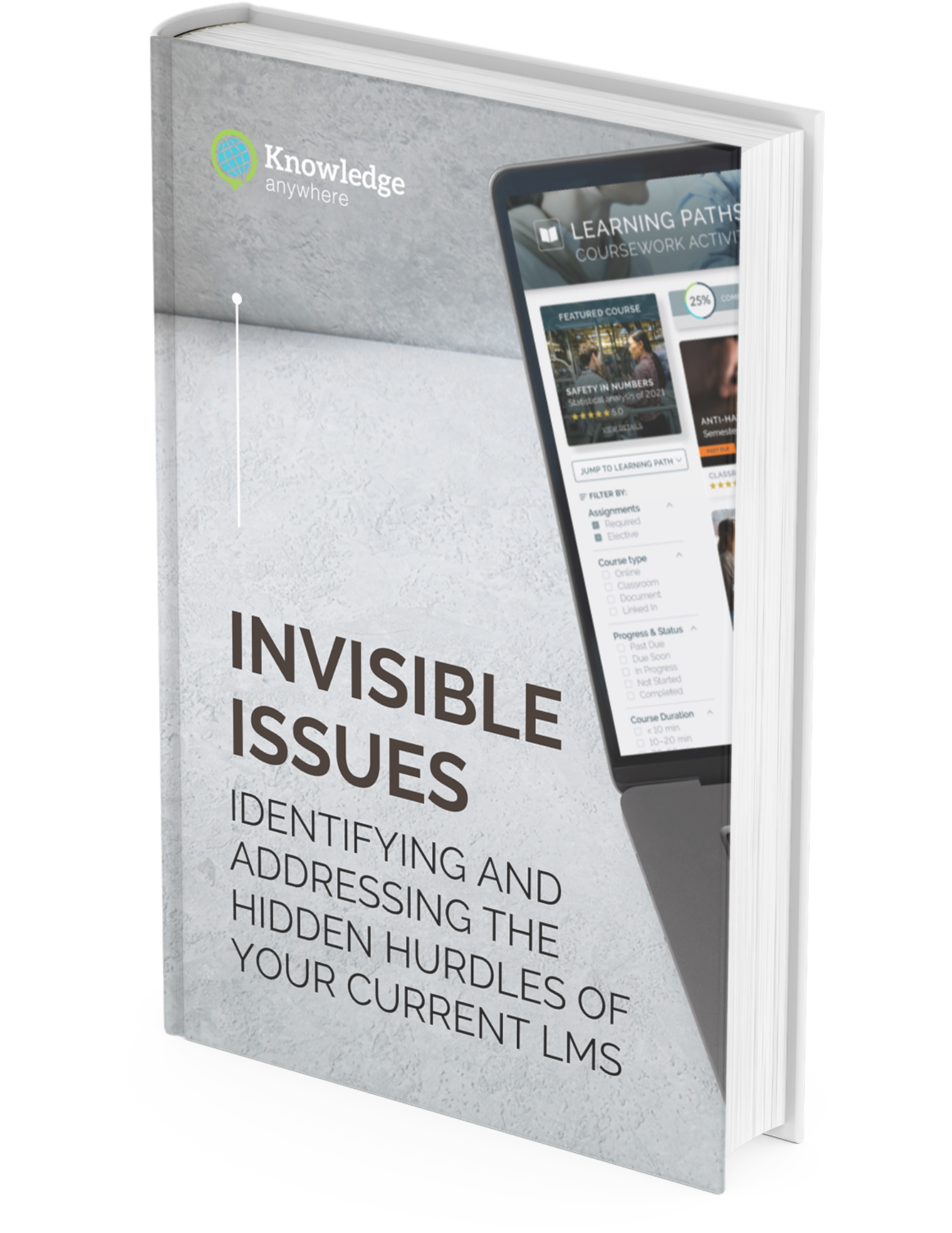We can improve your training in less than 5 minutes. TAKE OUR QUIZ
We can improve your training in less than 5 minutes. TAKE OUR QUIZ
So you’ve had your training platform implemented and set up, and are now past the basics. Instead of a generic article about training, we’ll dive into the top actionable tricks that Knowledge Anywhere’s support team uses to optimize and bolster online training programs for our customers that extend past the initial stages of training.
Do you have all these training elements?
If not, it may be time to level up your strategy if you want to see higher engagement and completion rates from your Learners.
Workers are being asked to do so much more now, and with recent layoffs looming, it’s obvious that most employees are trying their best to be more productive; a trend that’s been on the rise for quite some time. In fact, from 1979 to 2020, productivity increased by 61.8%! But how can we keep up with these piling expectations? Enter; automation.
Automated notifications are essential tools that remind learners about deadlines, encourage participation in discussions, and ensure they don’t miss important updates. They serve as gentle nudges that help maintain the momentum of learning without seeming overbearing.
To gauge the effectiveness of your notification strategy, monitor metrics such as open rates and click-through rates of the emails or messages sent. Keep an eye on logins and course completion rates following these notifications. These metrics will tell you not just if your messages are being seen, but also if they are compelling enough to drive action.
Based on the data collected, you might find that adjustments are necessary. If certain notifications have low open rates, consider changing the subject lines or the content within. If notifications are not converting into action, reassess the timing or the message’s call-to-action.
According to productivity and technology statistics, 89% of workers think gamification may boost productivity at the workplace.
Gamification leverages game design elements in non-game contexts to enhance user engagement and participation. It taps into the inherent human desires for competition, achievement, and recognition, making learning not just necessary but fun.
Start by incorporating elements such as leaderboards, badges, and point systems into your training programs, which usually are available within an LMS. These features create a sense of competition and accomplishment that can significantly boost learner engagement.
Decisions backed by data are not just advantageous – they’re essential. In fact, here’s a few statistics to prove just how important data-backed decisions really are.
So how can we leverage the power of data using tools found within an LMS?
To truly understand the effectiveness of your training programs, focus on several key metrics. Go through your own system to search for:
Learning to interpret these metrics correctly is crucial. For instance, if you notice a trend of declining completion rates, this might suggest that the course length is too long, or the content is not engaging. Similarly, patterns in assessment scores can help you identify specific modules where learners are struggling.

Do you currently utilize a Learning Management System (LMS) but feel like something’s amiss? Perhaps everything seems to be running smoothly on the surface, but you have a nagging feeling that there might be underlying issues you’re not aware of. This guide is tailored for professionals, educators, and administrators who are well-versed with their LMS but might be overlooking subtle challenges that can impact efficiency and user experience.
DOWNLOADWhy not make money creating and distributing your courses? With a training platform with an eCommerce feature, you can.
The beauty of digital courses is their scalability and accessibility, making them an ideal product for monetization. Whether you’re a business looking to share niche knowledge, or an educational institution aiming to extend your reach, selling courses online can tap into unexplored markets. With the right strategy, your LMS can transform from a cost center into a profit-making tool that contributes significantly to your organization’s revenue.
To see how Knowledge Anywhere customers can utilize eCommerce, watch our demo video here.
One of the most effective ways to ensure your Learning Management System continues to meet the needs of your learners is to listen – really listen – to the feedback they provide. Feedback isn’t just a tool for validation; it’s a critical resource for continuous improvement and innovation in your training programs. Harnessing this input can transform an average LMS into a dynamic learning platform that evolves in sync with its users.
Check your LMS for the following feedback tools and implement them appropriately:
Actively seeking, integrating, and responding to learner feedback transforms your LMS into a living ecosystem that grows and adapts to meet the ever-changing needs of its users. This approach not only ensures that your training remains effective and engaging but also fosters a sense of community and collaboration among learners, further enriching their learning experience.
You’ve taken the first steps by setting up a robust Learning Management System, but the journey toward truly impactful training doesn’t stop there. By integrating advanced features such as automated notifications, gamification, deep data analysis, revenue generation through course sales, and leveraging direct learner feedback, you can dramatically enhance the effectiveness and reach of your training programs.
To talk with an expert about how to improve your training program, schedule a quick consultation with us today!
An award-winning employee training tracking software that can power your business forward, helping to increase ROI, improve employee satisfaction, reduce turnover, quicken onboarding times, and make your learning process engaging.
What We Offer
Who We Help
Let's Get Started!
LMS Features
Who We Are
Resources